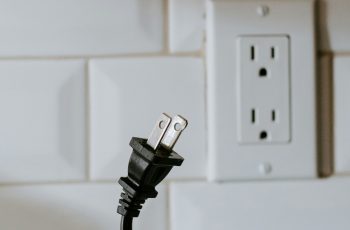Ad Blocker Detected
Our website is made possible by displaying online advertisements to our visitors. Please consider supporting us by disabling your ad blocker.
If you enjoy the speed and convenience of cooking meals in a stainless steel pressure cooker, it’s important to prioritize safety in the kitchen. With a few simple guidelines, you can ensure that your pressure cooking experience remains worry-free. From properly sealing the cooker to releasing pressure safely, this article will provide you with essential safety tips for using your stainless steel pressure cooker. So let’s dive in and make sure you cook up a storm without any mishaps!
Choosing a Safe Pressure Cooker
When it comes to choosing a safe pressure cooker, there are a few important factors to consider. One of the first things you should do is check for safety certifications. Look for pressure cookers that have been tested and certified by recognized safety organizations. These certifications ensure that the pressure cooker meets certain safety standards and has undergone rigorous testing.
Another important factor to consider is the pressure release mechanism. A safe pressure cooker should have a reliable and efficient pressure release mechanism that allows excess pressure to escape safely. Look for pressure cookers with multiple safety valves and locking features to prevent accidental opening during the cooking process.
Finally, it’s crucial to select a high-quality pressure cooker. Invest in a reputable brand that is known for its durability and safety features. Read reviews and do thorough research before making a purchase to ensure you are choosing a pressure cooker that will provide you with safe and consistent results.
Inspecting the Pressure Cooker
Once you have chosen a pressure cooker, it’s important to inspect it thoroughly before use. Start by checking the sealing ring. This is a crucial component that helps to create airtight conditions inside the pressure cooker. Look for any signs of wear or damage and replace the sealing ring if necessary.
Next, examine the safety valves. These valves are designed to release excess pressure and prevent the pressure cooker from exploding. Make sure they are clean, free from blockages, and functioning properly. If you notice any issues, consult the manufacturer or seek professional help to ensure the safety of your pressure cooker.
Lastly, take a close look at the lid locking mechanism. This mechanism is responsible for securely locking the lid in place during the cooking process. Ensure that it is in good working condition and that the lid locks tightly without any signs of looseness or instability.
Preparing Ingredients Properly
Properly preparing your ingredients is essential when using a pressure cooker. Start by cutting your food into uniform sizes. This will ensure even cooking and prevent some pieces from overcooking while others remain undercooked.
It’s also important to avoid overfilling the pressure cooker. Follow the manufacturer’s recommendations regarding the maximum fill line and do not exceed it. Overfilling can lead to excessive pressure buildup and potentially dangerous situations.
Additionally, be sure to add sufficient liquid to the pressure cooker. The liquid is necessary to create steam and build up pressure. The amount of liquid required may vary depending on the recipe, so it’s important to consult the recipe or the manufacturer’s instructions. Failure to add enough liquid may result in dry or burnt food and can potentially damage the pressure cooker.

Using the Pressure Cooker Correctly
Using a pressure cooker correctly is crucial for both safety and cooking success. It’s important to always follow the manufacturer’s instructions for your specific pressure cooker model. These instructions will provide you with important information regarding cooking times, pressure settings, and safety precautions.
Never overheat the pressure cooker. Overheating can lead to excessive pressure buildup and increase the risk of accidents. Always use the recommended heat settings and monitor the pressure cooker closely during the cooking process. If you notice any excessive steam or pressure release, immediately reduce the heat source or turn off the stove.
Avoid using quick-release methods unless specifically instructed to do so by the recipe or manufacturer. Quick-release methods can cause rapid pressure changes and may result in food splattering or burns caused by the sudden release of hot steam. Always follow the appropriate pressure release methods suggested by the manufacturer.
Maintaining Pressure Level
Once your pressure cooker is in use, it’s important to carefully monitor the pressure level throughout the cooking process. Most pressure cookers have pressure indicators that provide a visual representation of the pressure inside the cooker. Keep an eye on these indicators and ensure that they are within the desired range.
Adjust the heat source accordingly to maintain the desired pressure level. If the pressure is too high, reduce the heat. If the pressure is too low, increase the heat slightly. Finding the right balance will ensure that your food cooks evenly and prevent any potential safety issues.
Avoid opening the pressure cooker frequently during the cooking process. Every time the lid is opened, the pressure is released, and it takes time for the pressure to build up again. Frequent opening can prolong cooking times and may affect the final results. Only open the pressure cooker when it is absolutely necessary, such as when adding additional ingredients or checking for doneness.
Handling Hot Pressure Cooker
When the cooking process is complete, it’s important to handle the hot pressure cooker with care. Always use oven mitts or heat-resistant gloves to protect your hands from burns and heat. The pressure cooker will be extremely hot, and touching it with bare hands can result in severe injuries.
Avoid tipping the pressure cooker when handling it. Always hold it upright and use both hands for stability. Tipping the pressure cooker can cause hot liquid or steam to spill out, potentially causing burns or injuries.
Allow the pressure cooker sufficient cooling time before opening the lid. The pressure cooker needs time to release the pressure and cool down before it is safe to open. Follow the manufacturer’s instructions for recommended cooling times, and do not rush the process. Opening the pressure cooker too soon can result in sudden steam release and may cause burns or accidents.
Pressure Cooker Venting
Understanding the pressure release methods of your pressure cooker is crucial for safe operation. Different pressure cookers have different pressure release methods, such as natural release or quick release. Make sure you are familiar with the specific method used by your pressure cooker and carefully follow the instructions.
Use caution when releasing pressure, especially during quick release methods. Hot steam will be released rapidly, and it can cause burns if not handled properly. Always stand back from the pressure cooker and use a long utensil to turn the pressure release valve. This will prevent your hands and face from coming into contact with the hot steam.
Be mindful of hot steam when opening the pressure cooker. When opening the lid, lift it away from your face to avoid any potential steam burns. Take extra care as the steam can be extremely hot and can cause severe injuries if not handled with caution.
Cleaning and Maintenance
Proper cleaning and maintenance are essential for keeping your pressure cooker safe and in good working condition. Before cleaning, ensure that the pressure cooker has cooled down completely. Attempting to clean a hot pressure cooker can result in burns or injuries.
Regularly remove and clean the sealing ring. The sealing ring can accumulate food particles and oils, which can affect the pressure cooker’s performance and safety. Follow the manufacturer’s instructions for removing and cleaning the sealing ring, and inspect it for any signs of wear or damage.
Inspect the safety valves and gaskets regularly to ensure they are clean and functioning properly. These components play a crucial role in maintaining the pressure cooker’s safety. If you notice any issues or abnormalities, consult the manufacturer’s guide or seek professional help to ensure the proper functioning of your pressure cooker.
Common Mistakes to Avoid
There are a few common mistakes that you should avoid when using your pressure cooker. One of the most important things to remember is to never open the pressure cooker too soon. Opening the pressure cooker before it has released all the pressure can result in a sudden and rapid steam release, which can cause burns or accidents. Always follow the recommended cooling times and pressure release methods.
Adding ingredients with insufficient liquid is another common mistake to avoid. The liquid is necessary to create steam and build up pressure inside the cooker. If there is not enough liquid, the pressure cooker may not reach the desired pressure, and your food may not cook properly. Always follow the recipe or manufacturer’s instructions regarding the amount of liquid to add.
Lastly, avoid using your pressure cooker for canning purposes. Pressure cookers are not designed for canning and may not provide the required heat and pressure for safe canning. If you are interested in canning, invest in a separate canner that is specifically designed for that purpose.
Troubleshooting Pressure Cooker Issues
In case you encounter any issues with your pressure cooker, there are a few troubleshooting steps you can take. First, refer to the common problems and solutions section in the manufacturer’s guide. This section usually provides solutions to common issues and can help you troubleshoot minor problems.
If the problem persists or if you are uncertain about your pressure cooker’s safety, it’s best to consult the manufacturer’s guide or seek professional help. The manufacturer will have the expertise and knowledge to assist you with any specific issues or concerns you may have. Never attempt to repair or modify your pressure cooker without proper guidance, as it can compromise its safety and performance.
By following these safety tips and guidelines, you can confidently and safely use your stainless steel pressure cooker. Enjoy the convenience and efficiency of pressure cooking while ensuring the well-being of yourself and those around you.

